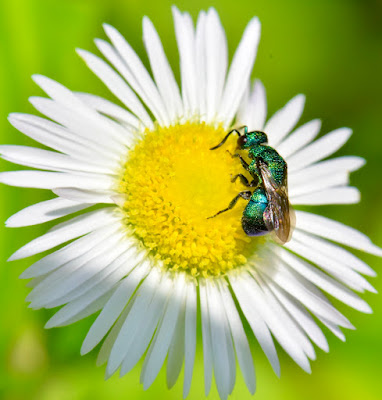When we arrived, the Birds of Vermont Museum was not open yet. We crossed the road and headed to one of the trails* carpeted with wood chips that leads to a pond. The shaded path gave comfort from the heat of the day. *See the trail map further below.
At first, there was not much activity around the pond. A few birds (Common Yellowthroat and a Veery), a few damselflies, and many frogs were conversing. The sound of the stream as the overflow departed the pond was mellow and delightful.
We strolled slowly along one side of the pond, stopping to sit on one of the benches for some quiet birding. We listened to a Phoebe as it persistently introduced itself by sounding out its name Phoebee, Phoebe, Phoebe. A Rose-breasted Grosbeak darted from a willow tree to hawk for insects in mid-air. Later, two Great Crested Flycatchers did the same before chasing each other across the pond.
We met a couple from Jericho sharing the ambiance and natural wonders with their young child (the mother is a wildlife biologist).
Later we headed back down for a quick tour of the Museum.
Along with the life-like wood sculptures of many species of birds carved by Bob Spear set in natural-like surroundings, there are also nature paintings by local artists. This hummingbird painting was done by a friend of ours, Pedro Salas. Pedro is the proprietor of Bee Happy Honey.
A short time later, I returned to the pond finding it still quiet - insect activity wise, but that was soon to change. As I sat on a bench to eat an apple, looking out over the pond, I noticed a dragonfly with what appeared to be shriveled wings just in front of me at the pond's edge.
About a half hour later, it was like someone rang the sex bell. Damselflies and dragonflies were mating all over the place. I could hardly keep up with taking photos.
About 45 minutes later, the mating activity seemed to come to a complete halt. Again, as though someone had rung a bell, this time signaling times up.
Once the sunlight reached the outer edges of the pond, bees, wasps, and other invertebrates increased activity. After the mating event, a new set of species introduced themselves, particularly on the Meadowsweet and the Fleabane flowers.





















Love this tour! Your photos are so wonderful--thanks for spotlighting Pedro's Hummingbird!
ReplyDelete